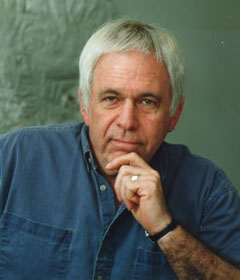By Gordon Kane, Distinguished University Professor of Physics, University of Michigan and a Lilienfeld Prize winner
Intro by LM: The HCP 2012 conference in Kyoto, Japan began today. Pallab Ghosh of BBC immediately told us that "SUSY has been certainly put in the hospital". This statement boils down to the recently exposed measurements at the LHCb detector of the rarest decay of the B-mesons so far (paper in PDF, public info), namely \(B_s^0\to\mu^+\mu^-\), whose observed branching ratio \(3.2^{+1.5}_{-1.2}\times 10^{-9}\) (about 99% certainty it is nonzero) agrees with the Standard Model's prediction of \((3.54\pm0.30)\times 10^{-9}\). See also a few days old LHCb paper on another decay and texts by Harry Cliff at the Science Museum Discovery blog, Michael Schmitt, Tommaso Dorigo, and Prof Matt Strassler on the muon decay. But what do actual supersymmetric stringy compactifications predict about this decay? Are they dead?
 I want to thank Luboš Motl for his interest and for inviting me to summarize our rare decay predictions for the data that is appearing this week. Basically the prediction for supersymmetry based on compactified string/M theories is that any rare decay rate should equal the Standard Model one within an accuracy of a few per cent.
I want to thank Luboš Motl for his interest and for inviting me to summarize our rare decay predictions for the data that is appearing this week. Basically the prediction for supersymmetry based on compactified string/M theories is that any rare decay rate should equal the Standard Model one within an accuracy of a few per cent.Although many string/M theory predictions can not yet be made accurately, some can, in particular the prediction for \(B_s\to \mu^+\mu^-\). The short summary of the argument is that compactified string/M theories have moduli that describe the shapes and sizes of the small dimensions. The moduli fields have quanta, scalar particles, that decay gravitationally so they have long lifetimes. In order to not destroy the successes of nucleosynthesis the moduli have to be heavier than about \(30\TeV\). One can show that the lightest eigenvalue of the moduli mass matrix is connected to the gravitino mass in theories with softly broken supersymmetry, and in turn that in such theories the squark and slepton (and Higgs scalar) masses are essentially equal to the gravitino masses. Thus the squarks and sleptons are heavier than about \(30 \TeV\), and they are predicted to be too heavy to observe at LHC or via the rare decays. The LHCb result agrees with this prediction. While the scalars are too heavy to be seen easily, gluinos and neutralinos and one chargino should be seen at LHC.

LHCb detector coils
A review article summarizing compactified M-theory predictions including those for the \(B_s\to\mu^+\mu^-\), many of which also hold for other corners of string theory, was recently published by Bobby Acharya, Piyush Kumar, and myself,
Compactified String Theories — Generic Predictions for Particle Physics (PDF).The same theory led to the prediction (before the data) of the Higgs boson mass to be \(126\pm 2\GeV\) including all supergravity constraints (details in the review article). Some people used phenomenological arguments to suggest scalars were heavy and thus expected similar results for rare decays. It should be emphasized that our predictions start from the Planck scale M/string theory and derive the results for supersymmetric \(\TeV\) scale theories. Getting the Standard Model result for \(B_s\to \mu^+\mu^-\) is the only prediction derived in a supersymmetric theory, and adds to the evidence for supersymmetry and for M/string theories beginning to become a meaningful predictive and explanatory framework for particle physics and cosmology.
P.S. by LM: On page 26 of the April 2012 review above, you may read that the branching ratio has SUSY contributions going like \((\tan\beta)^6\), but because the result is virtually indistinguishable from the Standard Model, one may only conclude that \(\tan\beta\lessapprox 20\). The upper limit "twenty" may get reduced a bit in the wake of the new LHCb measurement.







0 comments:
Post a Comment